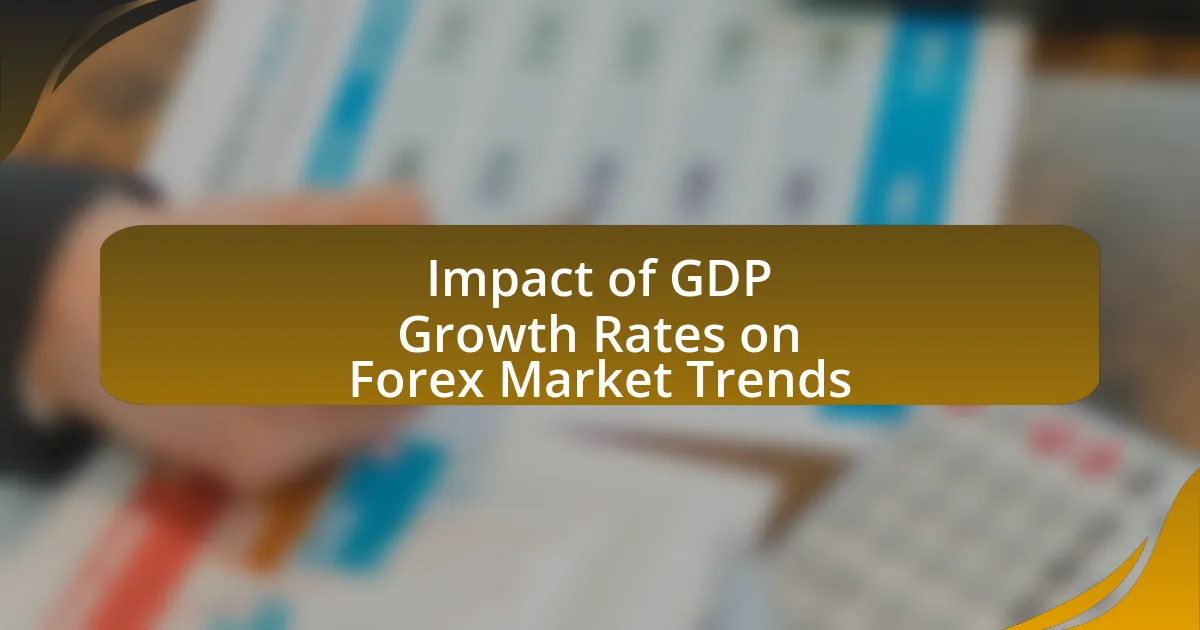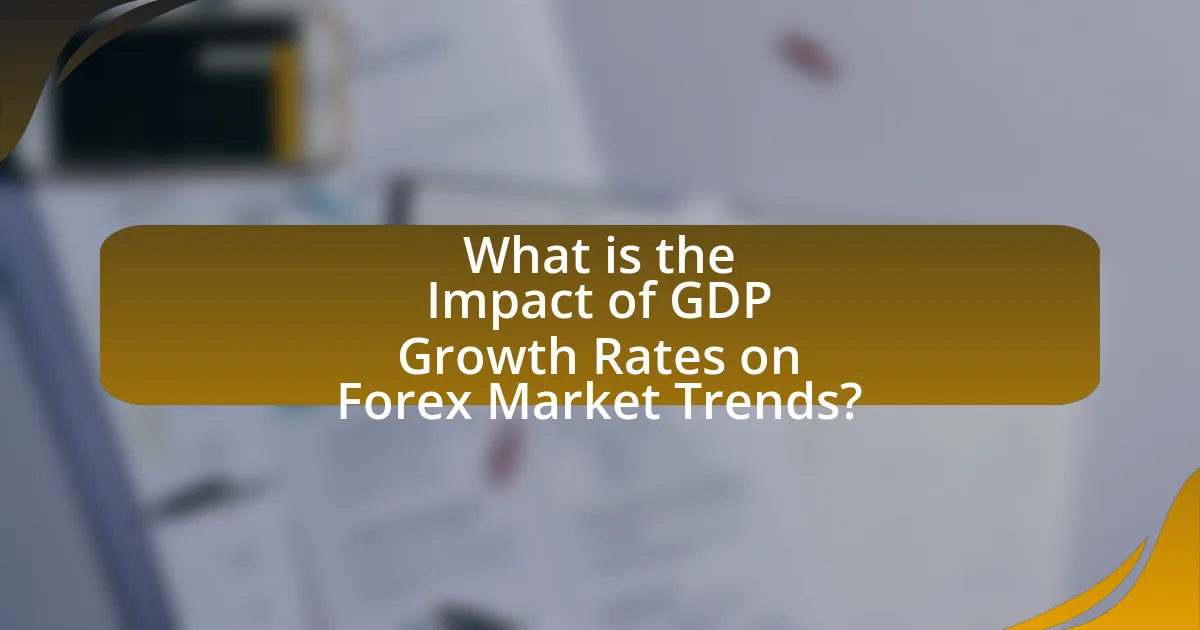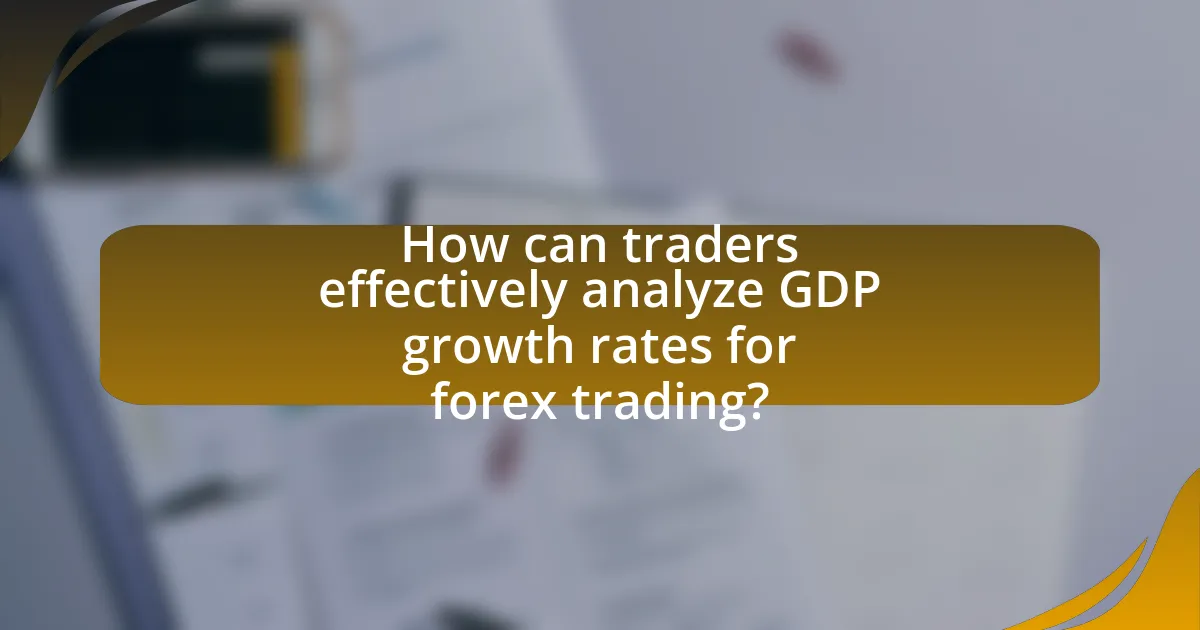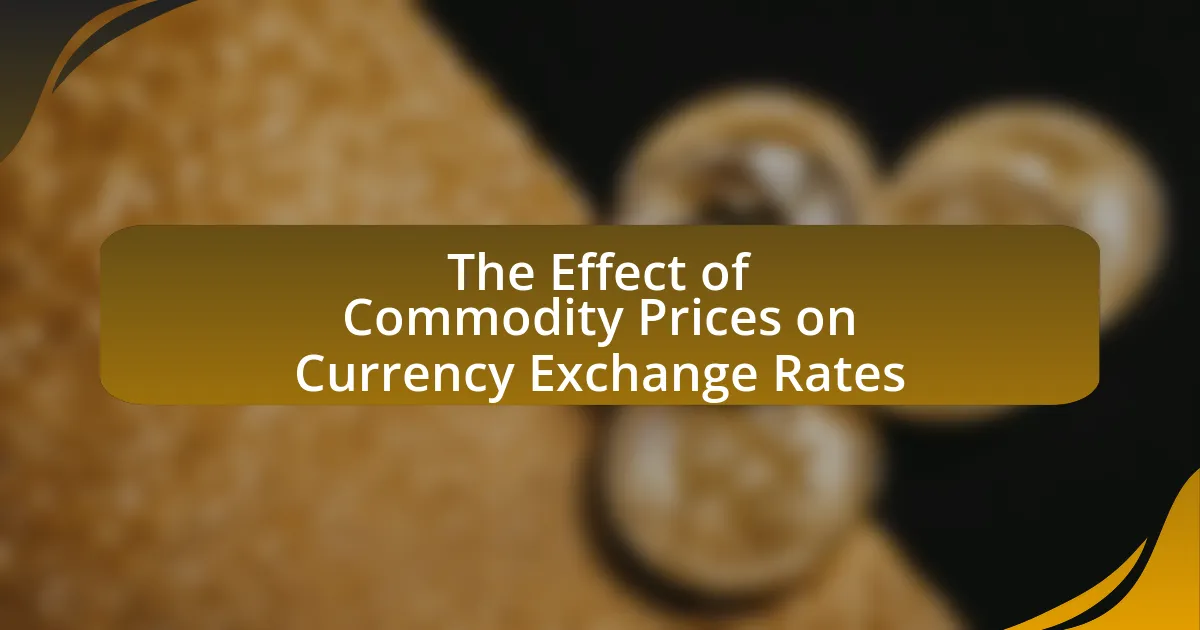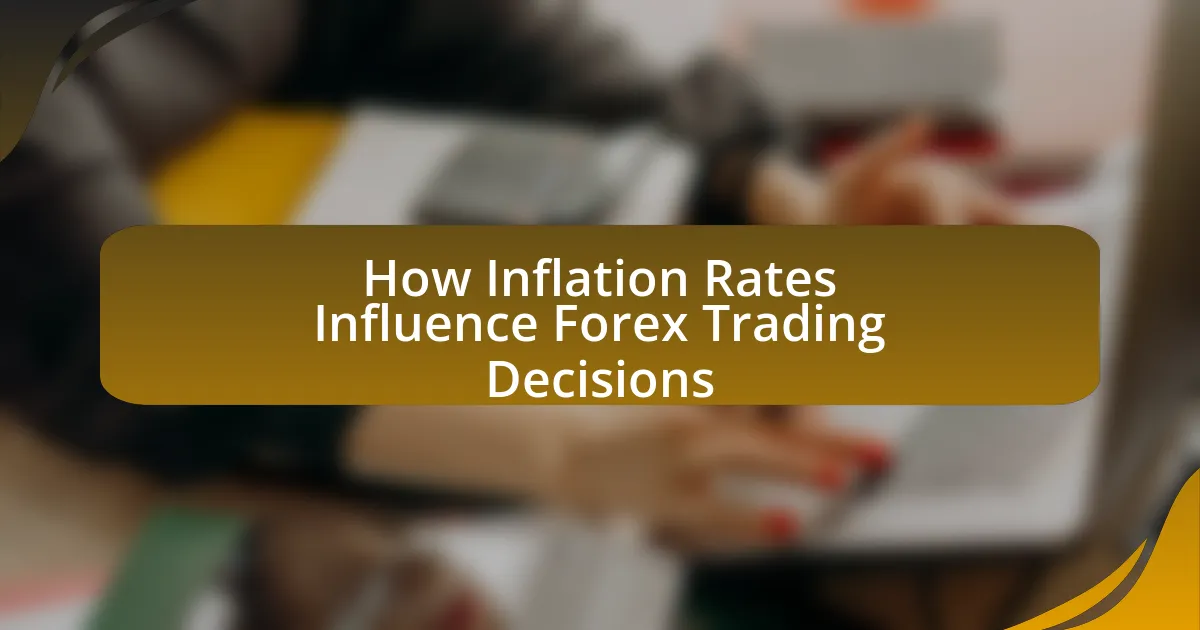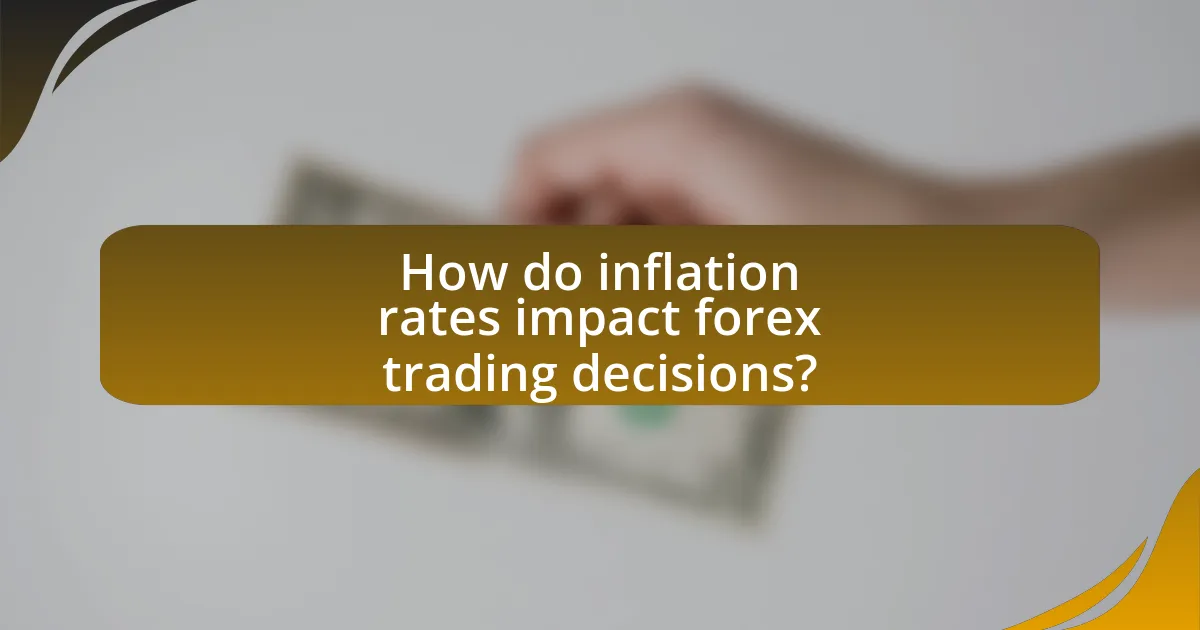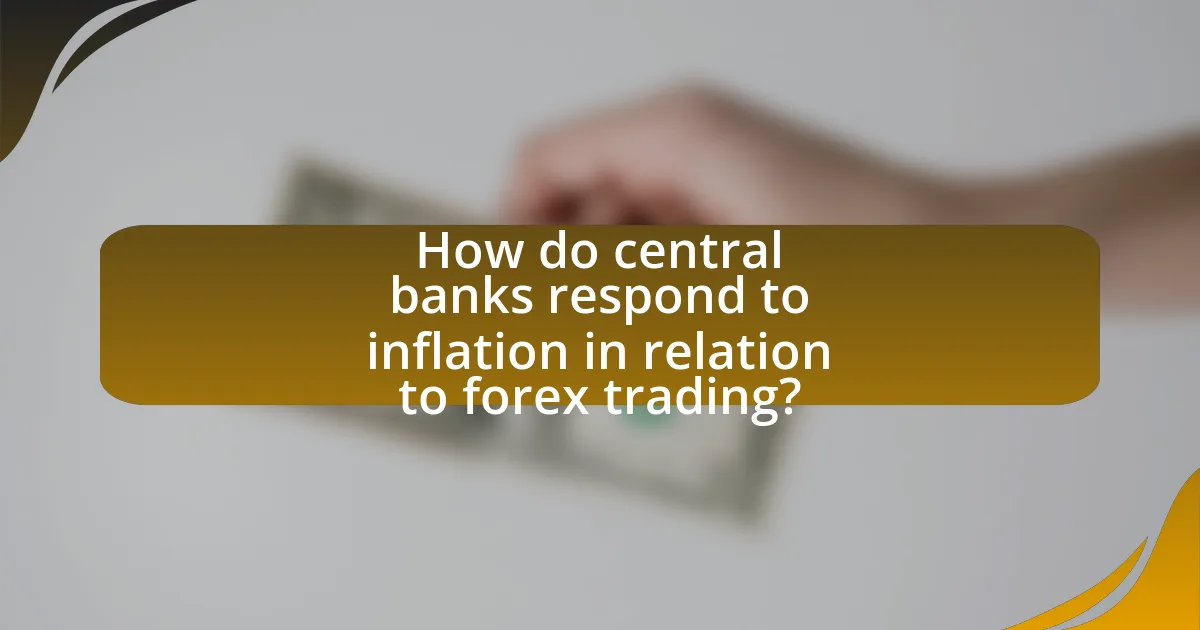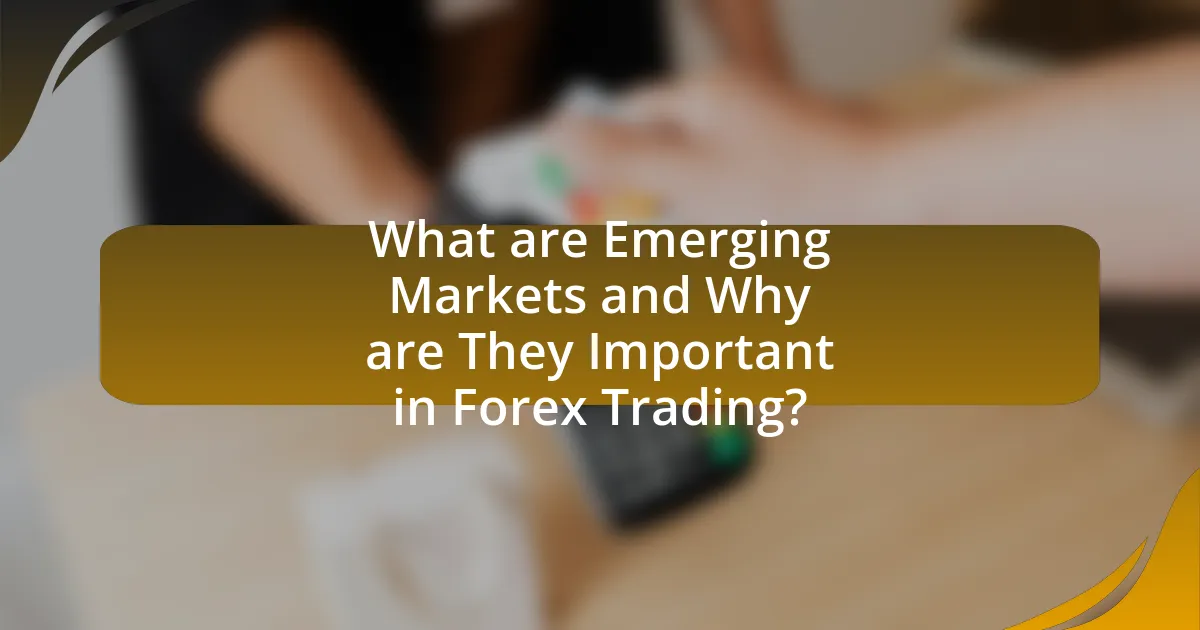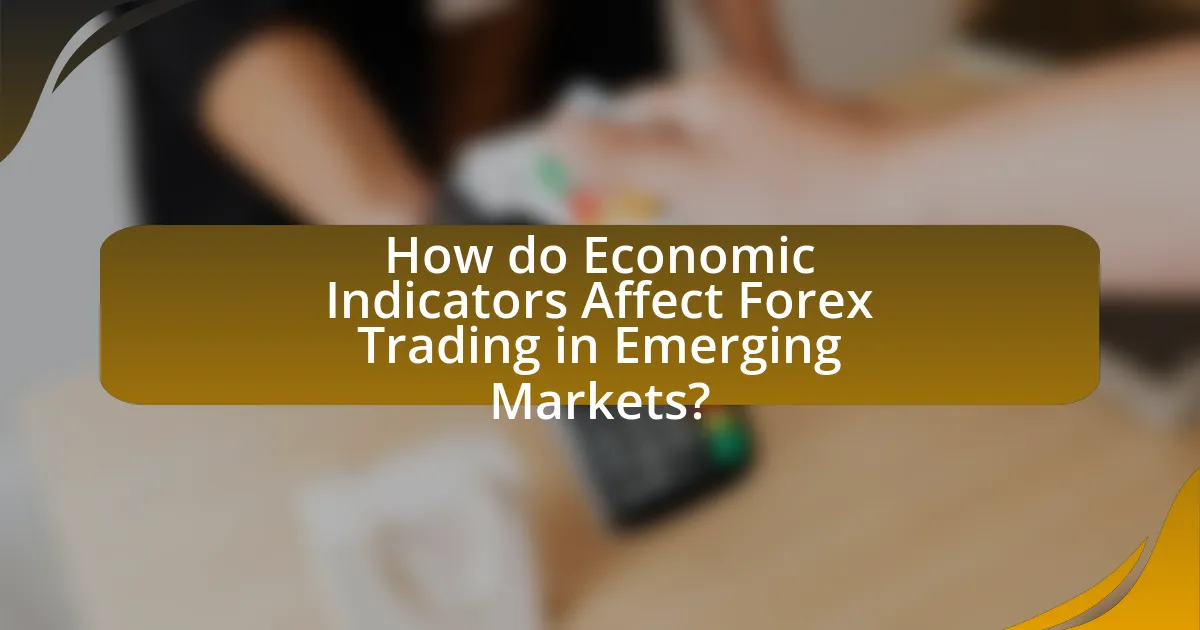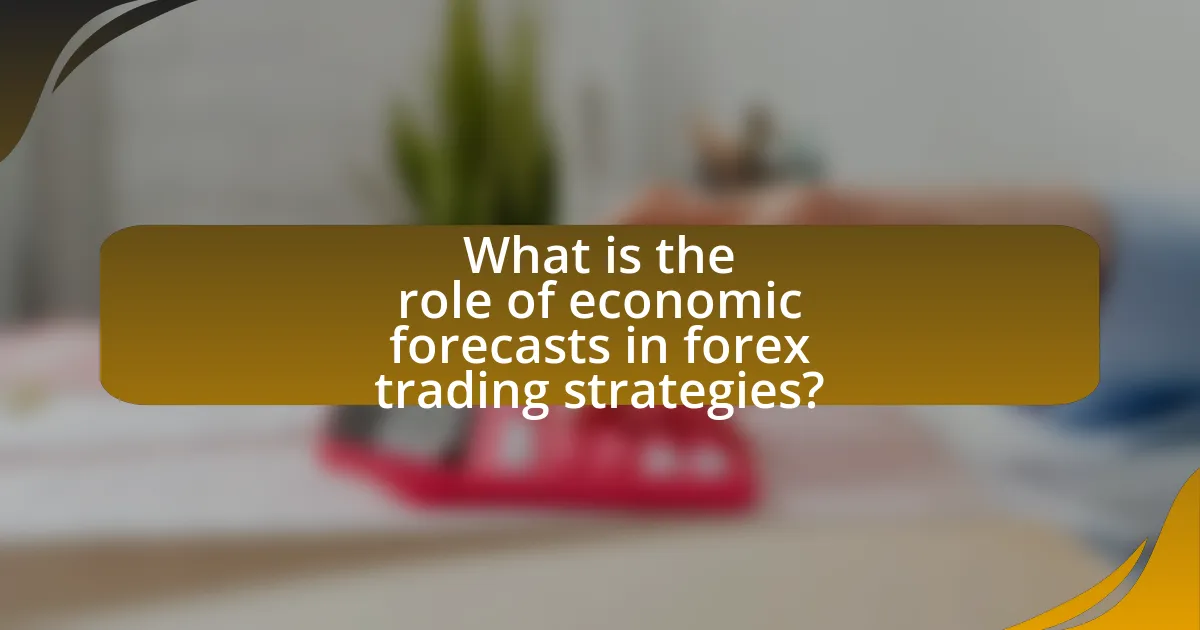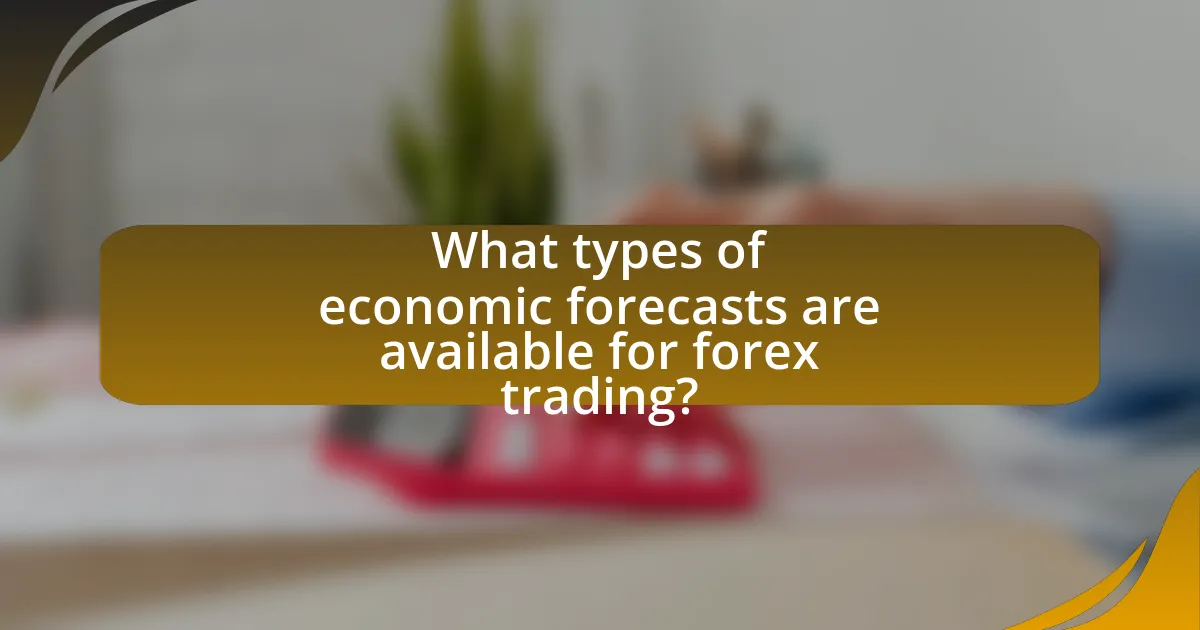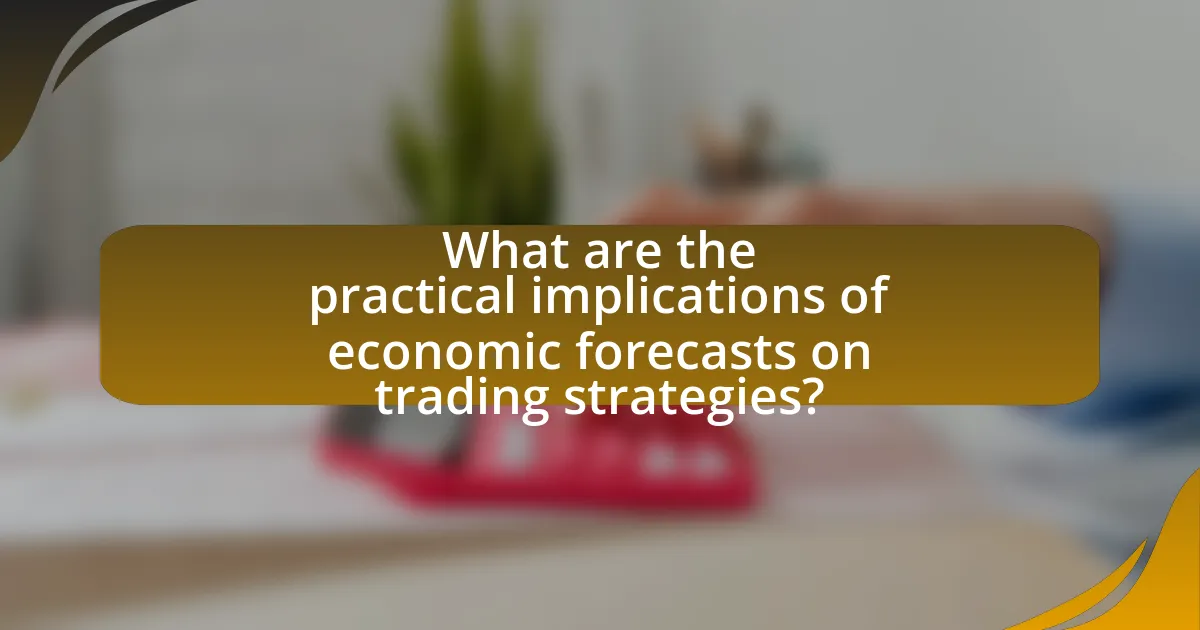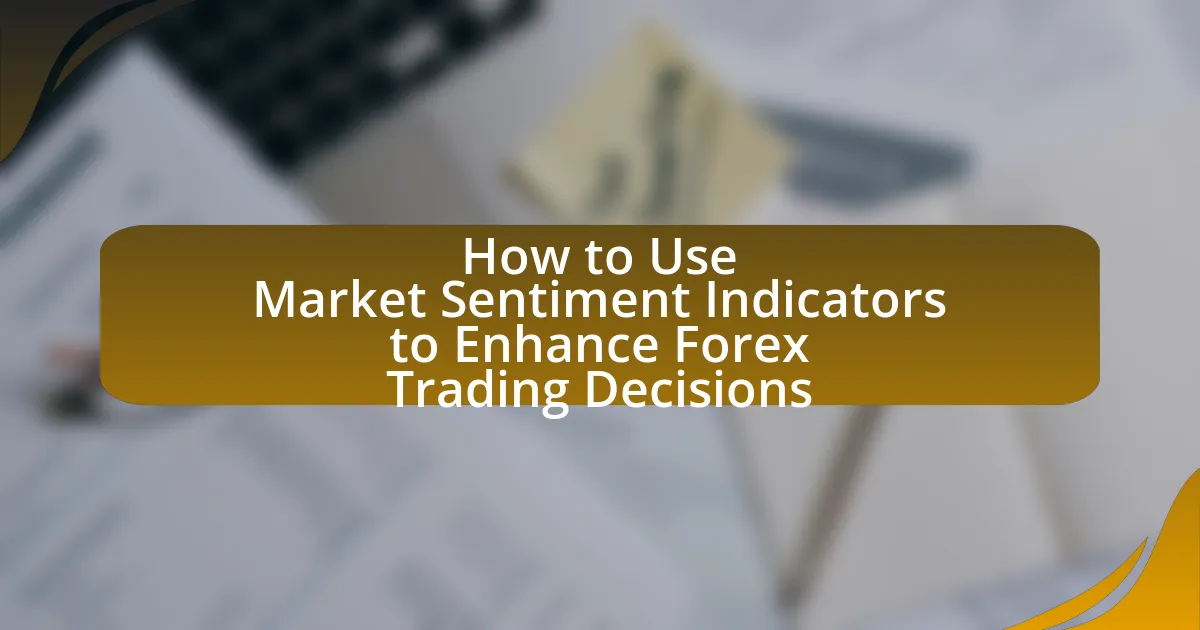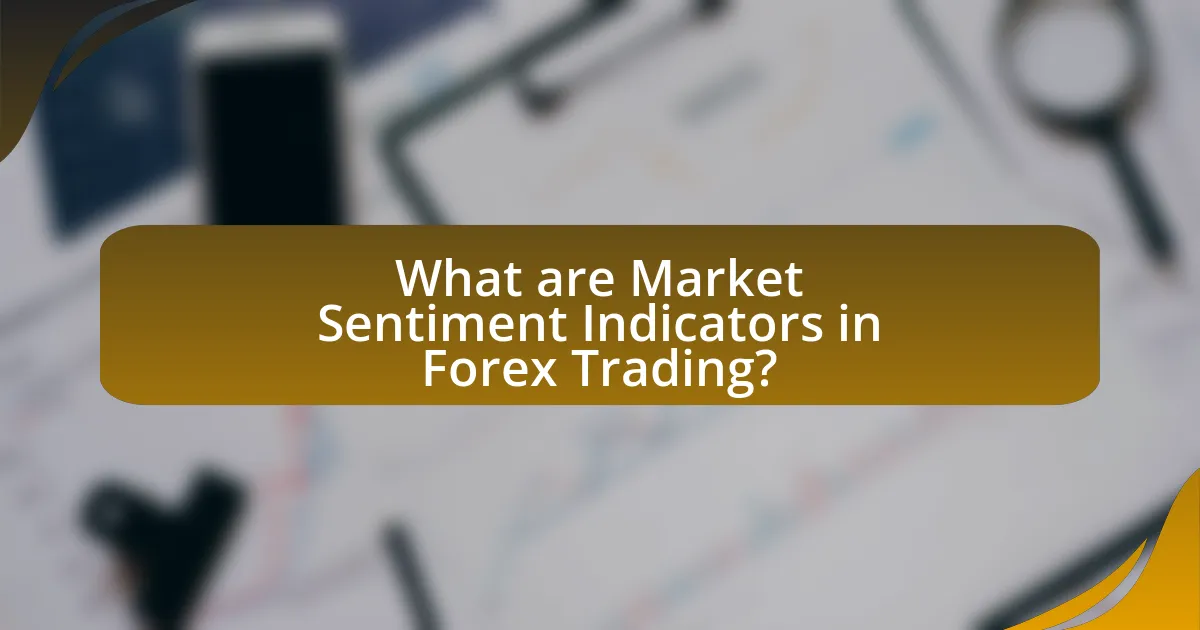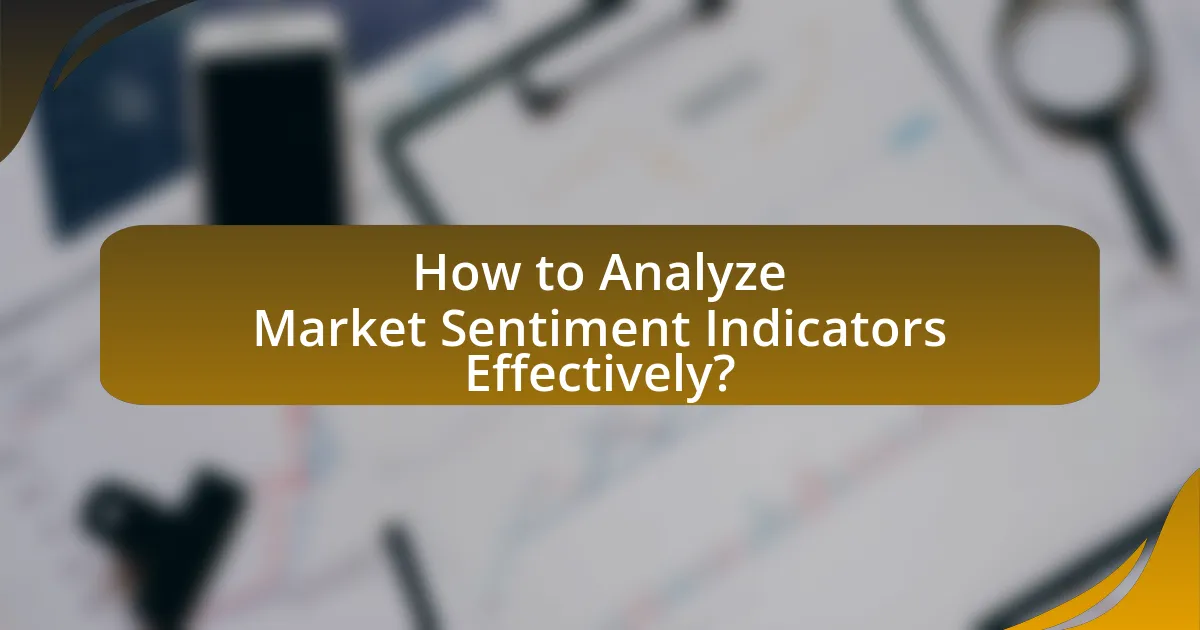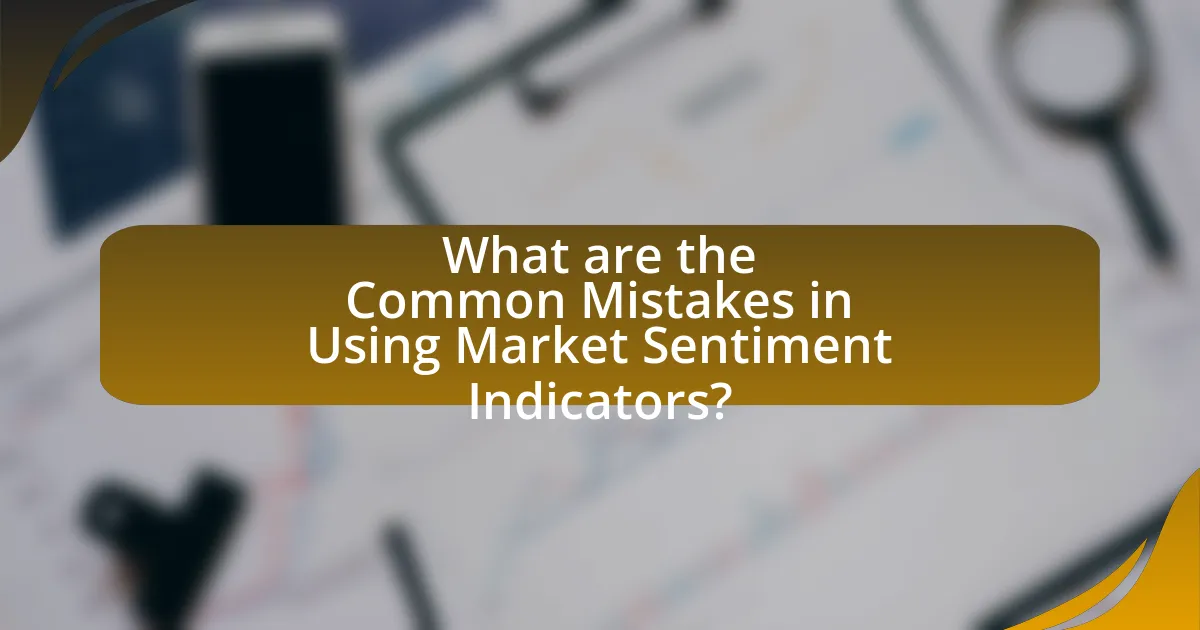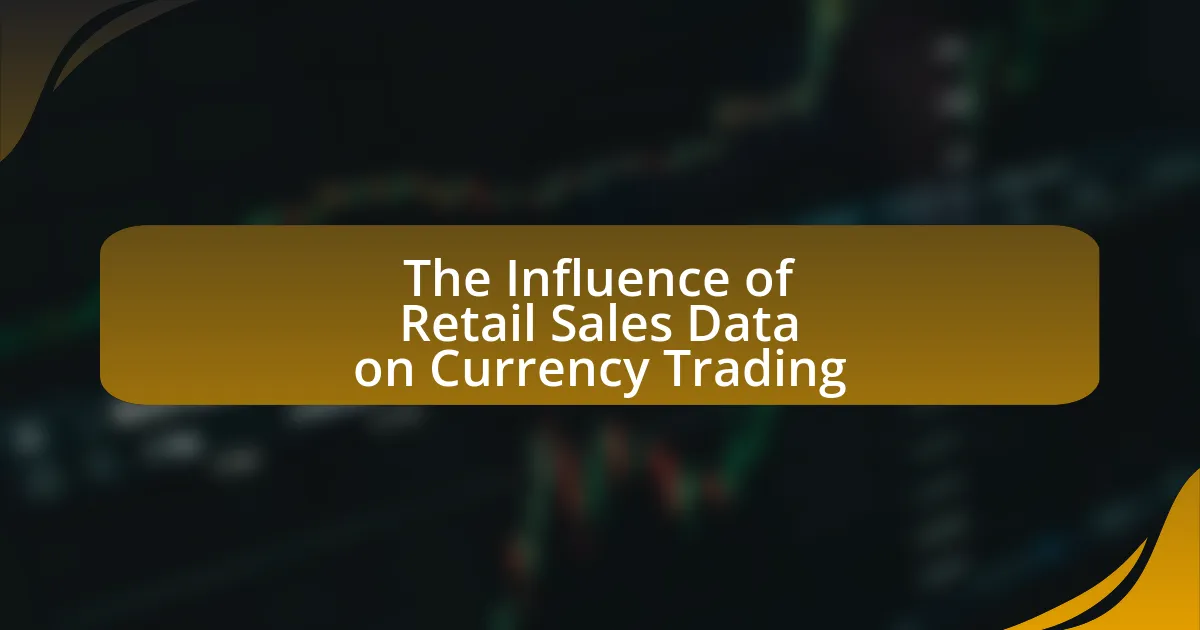Manufacturing PMI, or Purchasing Managers’ Index, is a crucial economic indicator that assesses the health of the manufacturing sector through surveys of purchasing managers. This article explores the significance of Manufacturing PMI in predicting currency trends, detailing its calculation methodology, release frequency, and its role as a leading economic indicator. It highlights how fluctuations in Manufacturing PMI can influence currency valuation and market expectations, while also discussing the potential risks and best practices for investors when interpreting this data. By examining historical examples and the relationship between Manufacturing PMI and other economic indicators, the article provides insights into effective trading strategies for currency markets.

What is Manufacturing PMI and Why is it Important for Currency Trends?
Manufacturing PMI, or Purchasing Managers’ Index, is an economic indicator that measures the health of the manufacturing sector by surveying purchasing managers about their business conditions. It is important for currency trends because it provides insights into economic activity; a higher PMI indicates expansion, which can lead to currency appreciation, while a lower PMI suggests contraction, potentially resulting in currency depreciation. Historical data shows that significant changes in PMI often precede shifts in currency values, making it a critical tool for investors and analysts in forecasting market movements.
How is Manufacturing PMI calculated?
Manufacturing PMI is calculated through a survey of purchasing managers in the manufacturing sector, where they report on various aspects of business conditions. The survey typically includes questions about new orders, production levels, supplier deliveries, inventories, and employment. Each of these components is assigned a weight, and the responses are aggregated to produce a composite index. A PMI reading above 50 indicates expansion in the manufacturing sector, while a reading below 50 indicates contraction. The methodology is standardized by organizations such as the Institute for Supply Management, which ensures consistency and reliability in the data collected.
What data is used in the Manufacturing PMI calculation?
The Manufacturing PMI calculation uses data from surveys of purchasing managers in the manufacturing sector. This data includes metrics such as new orders, production levels, supplier deliveries, inventories, and employment. Each of these components is weighted to produce a composite index that reflects the overall health of the manufacturing sector. The accuracy of the Manufacturing PMI is supported by its reliance on timely and direct feedback from industry professionals, making it a key indicator for economic trends.
How often is Manufacturing PMI released and by whom?
Manufacturing PMI is released monthly by the Institute for Supply Management (ISM) in the United States. The ISM publishes the Manufacturing PMI on the first business day of each month, providing insights into the economic health of the manufacturing sector based on surveys of purchasing managers. This regular release schedule allows analysts and investors to gauge economic trends and make informed decisions regarding currency movements.
What role does Manufacturing PMI play in economic indicators?
Manufacturing PMI serves as a critical economic indicator that reflects the health of the manufacturing sector. It provides insights into production levels, new orders, and employment trends, which are essential for assessing overall economic performance. A Manufacturing PMI above 50 indicates expansion in the manufacturing sector, while a reading below 50 signals contraction. Historical data shows that changes in the Manufacturing PMI often precede shifts in GDP growth, making it a reliable predictor of economic trends. For instance, the Institute for Supply Management reported that a 1-point increase in the Manufacturing PMI correlates with a 0.1% increase in GDP growth, underscoring its significance in economic analysis.
How does Manufacturing PMI compare to other economic indicators?
Manufacturing PMI is a leading economic indicator that reflects the health of the manufacturing sector, and it often provides insights into overall economic performance. Unlike lagging indicators such as GDP, which confirm trends after they occur, Manufacturing PMI offers timely data that can predict future economic activity. For instance, a Manufacturing PMI above 50 indicates expansion, while below 50 signals contraction, making it a crucial tool for forecasting economic trends. Historical data shows that changes in Manufacturing PMI often precede shifts in employment and consumer spending, reinforcing its predictive power compared to other indicators like unemployment rates or inflation, which react to economic changes rather than anticipate them.
Why is Manufacturing PMI considered a leading indicator?
Manufacturing PMI is considered a leading indicator because it reflects the economic health of the manufacturing sector, which often influences overall economic activity. The index is based on surveys of purchasing managers, providing timely insights into production levels, new orders, and employment trends. Historically, changes in the Manufacturing PMI have been correlated with GDP growth; for instance, a PMI reading above 50 typically indicates expansion, while a reading below 50 signals contraction. This predictive capability makes it a valuable tool for economists and investors in forecasting future economic conditions and currency trends.
How does Manufacturing PMI influence currency markets?
Manufacturing PMI influences currency markets by serving as a key economic indicator that reflects the health of the manufacturing sector. A higher Manufacturing PMI typically signals economic expansion, leading to increased investor confidence and a stronger currency, as seen when the U.S. Manufacturing PMI rose above 50, correlating with a strengthening of the U.S. dollar. Conversely, a lower PMI indicates contraction, which can weaken the currency, as evidenced by the decline in the euro when the Eurozone’s Manufacturing PMI fell below expectations. Thus, currency traders closely monitor Manufacturing PMI releases to gauge economic conditions and make informed trading decisions.
What is the relationship between Manufacturing PMI and currency valuation?
Manufacturing PMI (Purchasing Managers’ Index) has a direct relationship with currency valuation, as it serves as an economic indicator reflecting the health of the manufacturing sector. A higher Manufacturing PMI typically signals economic expansion, leading to increased investor confidence and a stronger currency. For instance, when the PMI exceeds 50, indicating growth, currencies of that country often appreciate due to anticipated higher interest rates and economic stability. Conversely, a lower PMI can suggest contraction, resulting in decreased currency value as investors may seek safer assets. Historical data shows that significant shifts in PMI often correlate with fluctuations in currency exchange rates, reinforcing its predictive power in currency trends.
How do traders use Manufacturing PMI data in their strategies?
Traders use Manufacturing PMI data to gauge economic health and make informed trading decisions. The Manufacturing Purchasing Managers’ Index (PMI) serves as a leading indicator of economic activity, reflecting changes in production levels, new orders, and employment within the manufacturing sector. A PMI reading above 50 indicates expansion, while a reading below 50 signals contraction. Traders analyze these trends to anticipate currency movements; for instance, a rising PMI may lead to expectations of economic growth, prompting traders to buy the currency of that country. Historical data shows that significant PMI releases often correlate with volatility in currency pairs, as traders react to the implications for interest rates and economic policy.

What are the implications of Manufacturing PMI fluctuations on currency trends?
Manufacturing PMI fluctuations significantly impact currency trends by influencing investor sentiment and economic forecasts. A rising Manufacturing PMI typically indicates economic expansion, leading to increased demand for a country’s currency as investors seek to capitalize on growth. Conversely, a declining Manufacturing PMI suggests economic contraction, which can result in decreased currency demand as investors move to safer assets. Historical data shows that when the U.S. Manufacturing PMI exceeded expectations, the U.S. dollar often strengthened against major currencies, reflecting heightened investor confidence. For instance, in 2021, a PMI reading above 60 correlated with a 2% appreciation of the dollar within weeks, demonstrating the direct relationship between PMI movements and currency valuation.
How do positive Manufacturing PMI results affect currency strength?
Positive Manufacturing PMI results typically strengthen a currency. This occurs because a higher PMI indicates robust manufacturing activity, suggesting economic growth and stability. For instance, when the U.S. Manufacturing PMI exceeds expectations, it often leads to increased investor confidence, resulting in higher demand for the U.S. dollar. Historical data shows that a PMI reading above 50 signals expansion, which correlates with currency appreciation; for example, in 2021, strong PMI readings contributed to a 10% increase in the dollar’s value against major currencies. Thus, positive Manufacturing PMI results are a key indicator of currency strength.
What historical examples illustrate this relationship?
The historical examples that illustrate the relationship between Manufacturing PMI and currency trends include the correlation observed during the 2008 financial crisis and the subsequent recovery period. In 2008, a decline in the Manufacturing PMI indicated a contraction in economic activity, which led to a depreciation of the U.S. dollar as investors sought safer assets. Conversely, in 2010, as the Manufacturing PMI began to rise, signaling economic recovery, the U.S. dollar appreciated against major currencies, reflecting increased investor confidence. This pattern demonstrates how shifts in Manufacturing PMI can serve as a reliable predictor of currency movements, supported by data from the Institute for Supply Management, which tracks these indices and their impact on market sentiment.
How do market expectations influence the impact of Manufacturing PMI releases?
Market expectations significantly influence the impact of Manufacturing PMI releases by shaping investor sentiment and market reactions. When the actual Manufacturing PMI data deviates from these expectations, it can lead to substantial volatility in currency markets. For instance, if the PMI is released above expectations, it typically signals economic strength, prompting investors to buy the currency, which can lead to appreciation. Conversely, if the PMI falls short of expectations, it may indicate economic weakness, resulting in currency depreciation. Historical data shows that significant deviations from expected PMI figures often correlate with sharp movements in currency values, underscoring the importance of market expectations in interpreting these releases.
What are the potential risks of relying on Manufacturing PMI for currency predictions?
Relying on Manufacturing PMI for currency predictions carries several potential risks, primarily due to its sensitivity to external factors and the possibility of misinterpretation. Manufacturing PMI is influenced by various elements such as seasonal fluctuations, geopolitical events, and changes in consumer behavior, which can distort its predictive accuracy. For instance, a sudden geopolitical crisis may lead to a sharp decline in manufacturing activity, impacting the PMI without reflecting the overall economic health. Additionally, the PMI is a survey-based index, meaning it relies on subjective responses from purchasing managers, which can introduce bias and variability. Historical data shows that while PMI can correlate with currency movements, it is not always a reliable indicator; for example, in 2020, the PMI indicated a contraction in manufacturing, yet some currencies strengthened due to other economic factors. Thus, using Manufacturing PMI in isolation for currency predictions can lead to misleading conclusions and increased risk in trading decisions.
How can false signals from Manufacturing PMI affect trading decisions?
False signals from Manufacturing PMI can lead to misguided trading decisions by creating a false sense of economic strength or weakness. When traders rely on inaccurate PMI data, they may enter or exit positions based on misleading indicators, resulting in financial losses. For instance, if a PMI reading suggests expansion when the actual economic conditions are contracting, traders might invest in a currency expecting appreciation, only to face depreciation as the market corrects itself. Historical data shows that significant discrepancies between PMI reports and actual economic performance can lead to volatility in currency markets, underscoring the importance of accurate PMI interpretation in trading strategies.
What other factors should be considered alongside Manufacturing PMI?
Other factors that should be considered alongside Manufacturing PMI include consumer confidence, employment rates, and inflation indicators. Consumer confidence reflects the overall economic sentiment and can influence spending and investment decisions, which directly impact manufacturing output. Employment rates provide insight into labor market conditions, affecting production capacity and consumer demand. Inflation indicators, such as the Consumer Price Index (CPI), help assess price stability and purchasing power, which are crucial for understanding the economic environment in which manufacturing operates. These factors collectively provide a more comprehensive view of economic health and potential currency trends.

How can investors effectively use Manufacturing PMI in their trading strategies?
Investors can effectively use Manufacturing PMI in their trading strategies by analyzing its trends to forecast economic conditions and currency movements. The Manufacturing PMI, which measures the economic health of the manufacturing sector, provides insights into production levels, employment, and new orders. A PMI reading above 50 indicates expansion, while a reading below 50 signals contraction. For instance, a consistent increase in PMI can suggest economic growth, prompting investors to buy currencies of countries with strengthening economies. Conversely, a declining PMI may lead investors to sell those currencies. Historical data shows that significant shifts in PMI often precede changes in currency value, making it a reliable indicator for traders.
What best practices should investors follow when interpreting Manufacturing PMI data?
Investors should analyze Manufacturing PMI data by considering trends over time rather than focusing solely on individual monthly figures. This approach allows investors to identify patterns that indicate economic health. For instance, a consistent rise in PMI readings over several months typically signals expansion in the manufacturing sector, which can positively influence currency strength. Additionally, comparing PMI data against other economic indicators, such as GDP growth and employment rates, provides a more comprehensive view of economic conditions. Historical context is also crucial; for example, a PMI reading above 50 generally indicates expansion, while readings below 50 suggest contraction. By integrating these best practices, investors can make more informed decisions regarding currency trends influenced by manufacturing activity.
How can investors combine Manufacturing PMI with other indicators for better predictions?
Investors can combine Manufacturing PMI with other indicators, such as GDP growth rates and employment data, to enhance predictive accuracy regarding economic trends. By analyzing Manufacturing PMI, which reflects the health of the manufacturing sector, alongside GDP growth rates, investors can gauge overall economic performance; for instance, a rising PMI typically correlates with increasing GDP, indicating economic expansion. Additionally, incorporating employment data allows investors to assess labor market conditions, as a strong manufacturing sector often leads to job creation, further supporting economic growth. Historical data shows that during periods of rising Manufacturing PMI, GDP growth has frequently followed, reinforcing the value of this combined analysis for predicting currency trends.
What tools and resources are available for tracking Manufacturing PMI trends?
Tools and resources available for tracking Manufacturing PMI trends include economic calendars, financial news websites, and specialized market analysis platforms. Economic calendars, such as those provided by Investing.com or Forex Factory, list the release dates and times for PMI reports, allowing users to anticipate changes. Financial news websites like Bloomberg and Reuters offer real-time updates and analysis on PMI data, helping investors understand its implications. Additionally, platforms like IHS Markit and Trading Economics provide historical PMI data and trend analysis, enabling users to visualize changes over time and make informed decisions based on past performance. These resources collectively support the monitoring of Manufacturing PMI trends, which are crucial for predicting currency movements.
What common mistakes should investors avoid when using Manufacturing PMI?
Investors should avoid overreacting to monthly fluctuations in Manufacturing PMI, as these can be influenced by temporary factors rather than long-term trends. For instance, a single month’s increase or decrease may not accurately reflect the overall economic health, given that Manufacturing PMI is subject to seasonal variations and external shocks. Additionally, investors often mistake the PMI’s absolute value for a definitive economic signal; however, it is more effective to analyze PMI trends over time and in conjunction with other economic indicators, such as GDP growth and employment rates, to gain a comprehensive view of economic conditions. Historical data shows that relying solely on PMI without considering broader economic context can lead to misguided investment decisions.
How can overreacting to Manufacturing PMI reports lead to losses?
Overreacting to Manufacturing PMI reports can lead to losses by causing traders to make impulsive decisions based on short-term fluctuations rather than long-term trends. For instance, if a trader reacts negatively to a slight decline in the PMI, they may sell their positions prematurely, missing out on potential rebounds as the market stabilizes. Historical data shows that markets often correct themselves after initial reactions to economic reports, indicating that knee-jerk responses can result in missed opportunities and financial losses. Additionally, the Manufacturing PMI is just one of many indicators; overemphasis on it can skew a trader’s perspective, leading to poor investment choices.
What strategies can mitigate risks associated with Manufacturing PMI trading?
To mitigate risks associated with Manufacturing PMI trading, traders can employ strategies such as diversification, using stop-loss orders, and analyzing historical data. Diversification reduces exposure by spreading investments across different sectors or currencies, which can buffer against adverse movements in any single area. Utilizing stop-loss orders allows traders to automatically exit positions at predetermined levels, limiting potential losses. Analyzing historical data on Manufacturing PMI releases can provide insights into market reactions, helping traders anticipate potential volatility and adjust their strategies accordingly. These strategies are supported by empirical evidence showing that risk management techniques can significantly enhance trading performance and reduce the likelihood of substantial losses.

